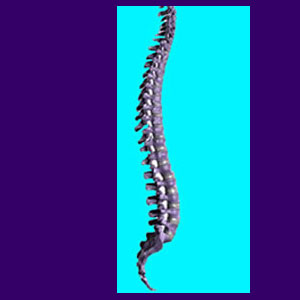
Spinal arthritis is another name for spondylosis, degenerative joint disease and osteoarthritis. There is a tremendous degree of controversy and speculation about why some people develop painful symptoms with arthritis of the spine, while the majority have little or no pain whatsoever. It is crucial to understand that virtually all of us will develop the physical changes associated with arthritis, particularly in the lower lumbar and mid to lower cervical spinal regions. However, most of us will not develop any significant pain in relation to these anatomical changes.
The focus of this article will detail the common and often enigmatic symptomatic expressions of various arthritic processes in the spinal column.
Symptoms of Spinal Arthritis
The following expressions are all symptoms which can be actually sourced by spinal arthritic change or may be perceived to stem from the arthritic processes:
Pain in the actual spinal joints is usually caused by bone to bone contact between the vertebrae or bone spurs that have formed around the spinal joints. Discomfort may be dull most of the time and flare-up with particular movements. Pain may resolve if the spurring responsible diminishes with wear and tear over time or may escalate if the causative processes worsen.
Neurological symptoms, such as tingling, numbness or weakness, are often associated with nerve interactions with the arthritic processes. These symptoms are usually caused by bone spurs narrowing the foraminal openings, causing a pinched nerve condition.
Bone spurs can occasionally take up much of the foraminal space a nerve root requires to exit from the spine. In other circumstances, spinal stenosis may result from arthritic debris in the central canal. This can cause pain and nerve symptoms, along with many functional issues below the affected vertebral levels.
Loss of flexibility and range of motion in the affected area of the back is an almost universal expression of moderate to severe arthritis. Stiffness might be especially noticeable in the morning and before bed. Many patients avoid long periods of static positioning to avoid chronic stiffness which can make life rather uncomfortable.
The sound or feeling of bone on bone crunching or cracking is called crepitus and/or cavitation and is not inherently painful. It can be scary though. Many patients have chronic cracking when moving their necks.
Lumbar osteoarthritis can be painful when sitting, standing, walking or bending. Cervical osteoarthritis can be painful with motion of the neck. Many patients have a tough time keeping their head in one position for too long.
Arthritis Symptoms in the Spine
Are you getting older? Of course, we all are. Look in the mirror. What do you see? Gray hair? Wrinkles? You can’t see osteoarthritis in the mirror, but it is there, or will be soon. It is normal. Don’t worry about it. If you look at mild symptoms as normal and just another fact of life, you will most likely be ok. Your wrinkles don’t hurt. Your gray hair doesn’t hurt. Your spinal arthritis does not have to hurt either. You should be fine, as long as your arthritic change is typical for your age and condition.
Stressing out over minor aches and pains associated with typical arthritic change will only serve to escalate the severity and frequency of the symptomatic expression. However, if you have been diagnosed with severe arthritic conditions, such as those causing spinal stenosis or spinal nerve issues, then this is another matter altogether.
First, you must be sure the diagnostic conclusion is correct. You can work towards this goal by learning all you can about the type of arthritis you have. Talk to your doctor and ask lots of questions. You are paying them, so don’t be shy. If they are not cooperative in helping you to learn to your satisfaction, get a new doctor who cares more.
Do lots of independent research on what to expect from your particular type and location of arthritic change. If you symptoms do not correlate to the clinical expectations, then something might be amiss in the diagnostic theory. Remember, many cases of arthritis are blamed for pain that they do not actually cause.
Most of all and above all else, if you do require spinal arthritis treatment, be selective and base your decisions on overall risk-to-benefit ratio. Drugs can work fine, but might also slowly murder you from side effects which might be conveniently ignored by the prescribing physician. Surgery works well for some conditions, such as definitive central or neuroforaminal stenosis, but not as well for others, such as suspected facet joint syndrome. Be careful when making your choice and always stick to more conservative methods, whenever possible.





